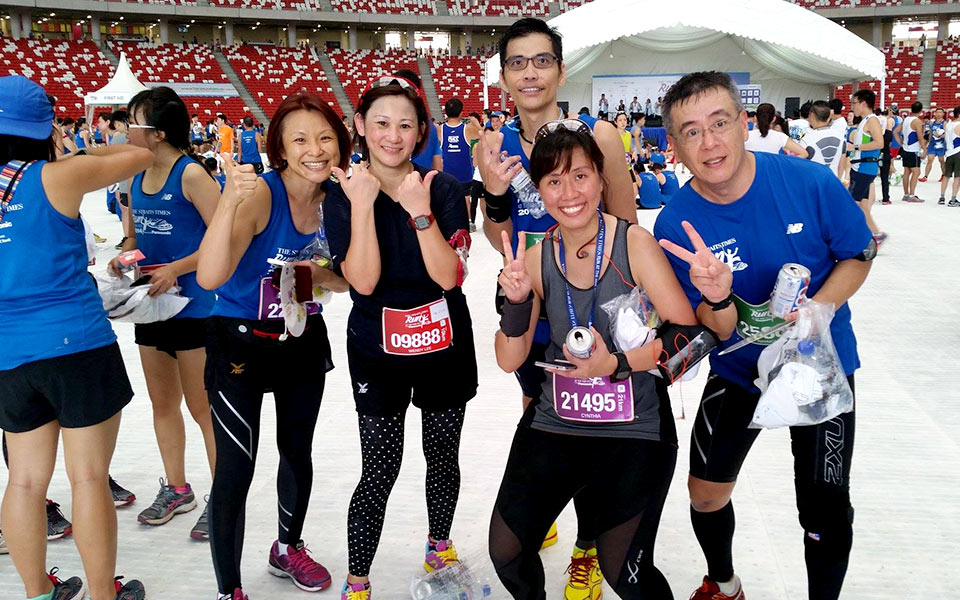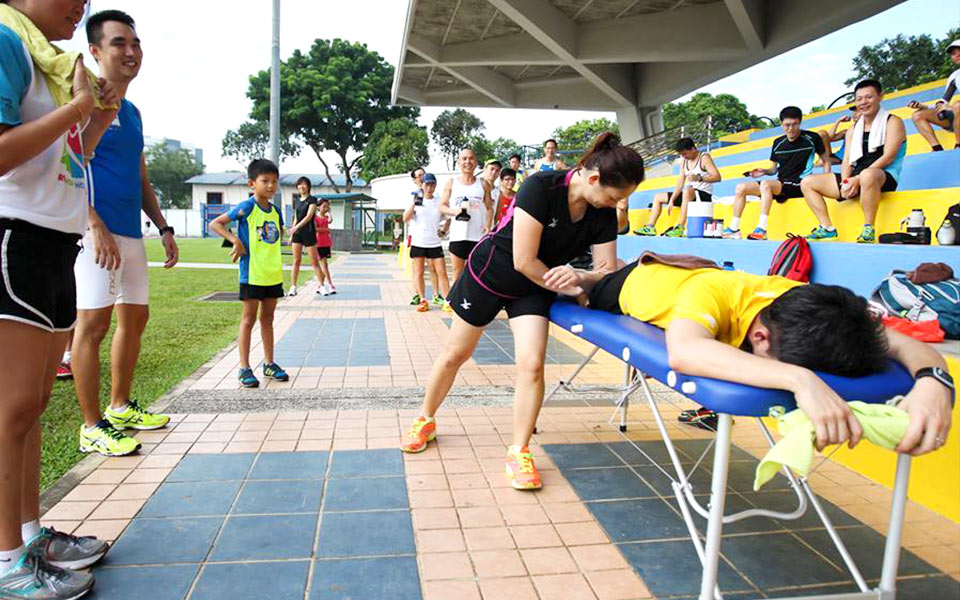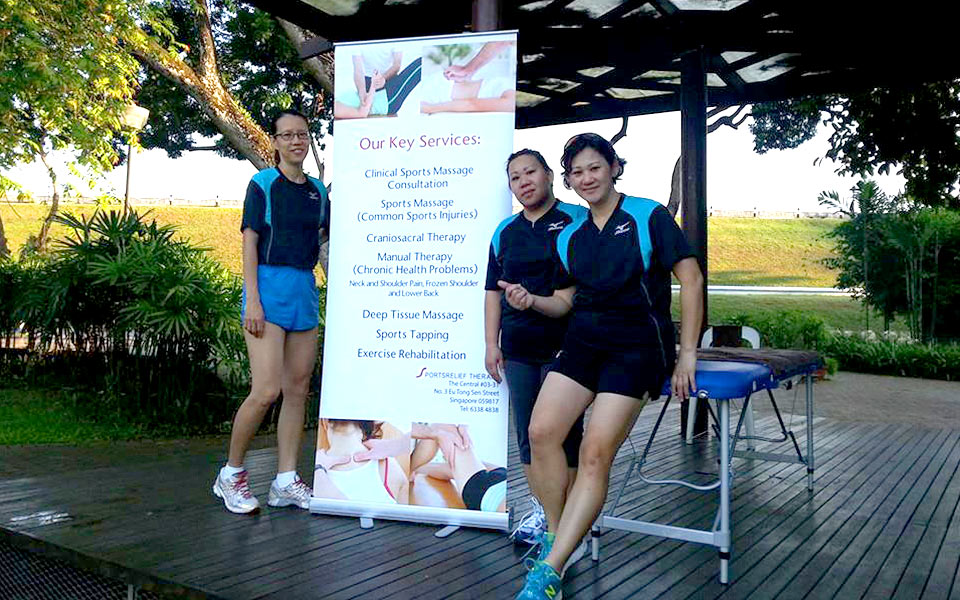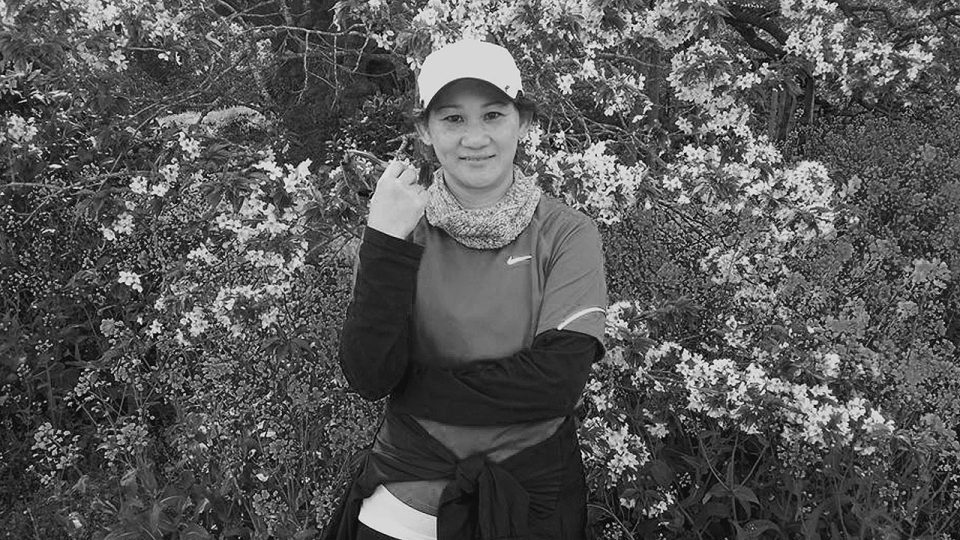What hurts worse? Your neck, shoulder, Achilles tendon, hamstrings, rotator cuff or quadriceps? Maybe you suffer from tennis elbow or gastrocnemius. Can one therapy solution be found for so many types of aches and pains? Happily, the answer is yes if you put yourself into the capable hands of sports therapist Wendy Lee. Her Sports Relief Therapy business was kick-started in 2011 and her client list just keeps growing.
Wendy Lee’s credentials are impressive, but you should expect nothing less from the woman known to close friends and clients as Lee Yuet Leng Wendy. As a certified sports therapist and member of the Sports Massage Association, Lee’s ITEC sports massage and holistic massage credentials make her an expert in all aspects of remediating soft tissue injuries, pains and strains—there’s not a sport or activity she hasn’t studied assiduously enough to diagnose and treat.
An avid runner with aspirations to compete in marathons in-between treating her devoted clients, Wendy Lee focuses on injury prevention and rehabilitation recovery, using such techniques as sports tapping, craniofacial therapy, deep tissue massage, exercise rehabilitation and clinical sports massage. She also treats non-run related health problems, in addition to targeted sports injuries.
No wonder Ms. Lee has no time to train for and run marathons—she’s too busy making sure Singaporean runners get to the finish lines in the best physical shapes possible! Our editors paid a visit to this dynamic woman and returned from the interview brimming with enthusiasm for a woman whose remarkable journey from office worker to professional sports therapist continues to impact the lives of runners in many ways.
RS: How and why did you get into the sports massage business?
Wendy: Like many women in Singapore, I had a job that paid the bills: I was a legal secretary for 20 years. I wanted to exercise more control over my life—to have a profession, not a “job”. I also began running and became concerned about injuring myself, realizing there was nobody to whom I could turn if that ever happened. That’s when this serendipitous thought dawned on me:
“Why not break free of my job and become a sports therapist to help others?”
Two big problems solved with one solution!

RS: Is sports massage a new phenomenon in Singapore?
Wendy: Sports massage is a profession that has grown out of our nation’s fascination with running and I can tell you that my patient list just keeps expanding. Many people find it hard to believe that I’ve only been in practice two years. This is a niche profession destined to explode.
RS: Can you describe the benefits a patient receives when he avails himself of your services?
Wendy: How much time do you have? Importantly, runners obtain relief from pain; their recovery times are accelerated because my methods for rehabilitating the body are both state-of-the-art and holistic, and I always give my clients tips on how to train properly so that they sustain fewer future injuries.
RS: Could you tell us about the trickiest sports injuries you’re called upon to treat?
Wendy: The most common are “overuse” injuries; runners who habituate their training routine in ways that stress certain muscles repeatedly, pushing muscles beyond endurance. It’s hard to find doctors and therapists trained to spot overuse injuries. A patient might not get a proper diagnosis, so the cycle repeats. Overuse injuries are “100-percent mechanical”. I use a holistic approach to rehabilitate runners and also teach them to spot overuse injuries before they happen again.
RS: Do you ever treat patients who aren’t injured athletes?
Wendy: I do. I offer massage therapy services and have clients who come to me exclusively for weekly or bi-weekly massages, whether they run or not. But runners will always be my main concern. When events loom—half-, ultra, Ironman, marathons—runners book appointments for pre- and post-event massages. These runners really care for their bodies.
RS: Do you ever keep track of the number of bodies you treat?
Wendy: I have no clue! I suppose that if I went back over the past two years’ worth of treatment records I could try to count them, but who has time to do that? When I’m not treating clients, I’m training and spending time with friends.
RS: If you had to name the most common injuries you treat, what would they be?
Wendy: ITB Band syndrome, Achillies Tendinopathies, Planatar Fasciitis, common muscle strains, lower lumber pain, stiff necks and shoulders and I treat a lot of cases of joint stress.

RS: Let’s say our readers contact you for an appointment, but you’re totally booked up! How can they choose a qualified or skilled therapist until you have an opening?
Wendy: This might sound silly, but runners should always ask a practitioner whether or not they run! That old saying, “You don’t know what people are going through unless you walk a mile in their shoes” was never more applicable than it is when trying to find the right clinician. Further, how can someone treat the whole person unless she understands what runners experience emotionally and physically? And a competent therapist is always happy to work with chiropractors, physical therapist, orthopedic doctors, podiatrists and athletic trainers.
RS: What tools do you use to help clients and what do you recommend in the way of self-treatment?
Wendy: I rely on manual therapy most of the time—deep tissue massage requires strong hands that no machine can replicate. I encourage patients to supplement their treatments with stretching exercises and use techniques like foam rolling to stay limber and obtain relief between appointments.
RS: Are there other sports therapists in your practice—or elsewhere in Singapore?
Wendy: I’m the only practitioner at Sports Relief Therapy, and I believe the closest I could get to finding colleagues would be to meet with spa professionals who usually focus exclusively on therapeutic massage for a wide spectrum of clients rather than concentrating primarily on sports injuries.
RS: Speaking of your massage therapy service, how do runners respond to different massage protocols?
Wendy: Some runners don’t need massages until after they race—when they’re in the cool/down recovery process. Others use massage to loosen up before races. Many benefits exist to both. Massages dissolve waste fluids like lactic acid that can build up in muscle and trigger injuries. In either case, muscles, tendons and joints benefit greatly from massage, so range of motion stays fluid and runners’ bodies remain in optimal shape.
RS: Do you think runners risk injuries more than do other sports participants?
Wendy: Runners are more prone to injuries in the lower torso and lower extremities: knees, hips and feet.
RS: Before we leave you, could you let us in on your personal upcoming running challenges so that we can keep an eye out for you when we cover events?
Wendy: Of course. At the moment, I plan to participate in these 2014 events: The 10km Great Eastern and 10km Run for Hope and the 42km Standard Chartered. In 2015, the 21km Cross Country SkyHawk in Malaysia and the Twilight Ultra Challenge are both on my calendar. I always look for my clients when I’m at the start line! It’s awesome to know that I had a part in making sure they are in top shape.

What have you learned about yourself after reading about Wendy Lee’s efforts to carve out a unique career and use her passion for running to tone her own body and care for others? If she is your new inspiration, we would love to hear from you. You can check out Sports Relief website or contact Wendy on facebook with regards to your running problems too.




